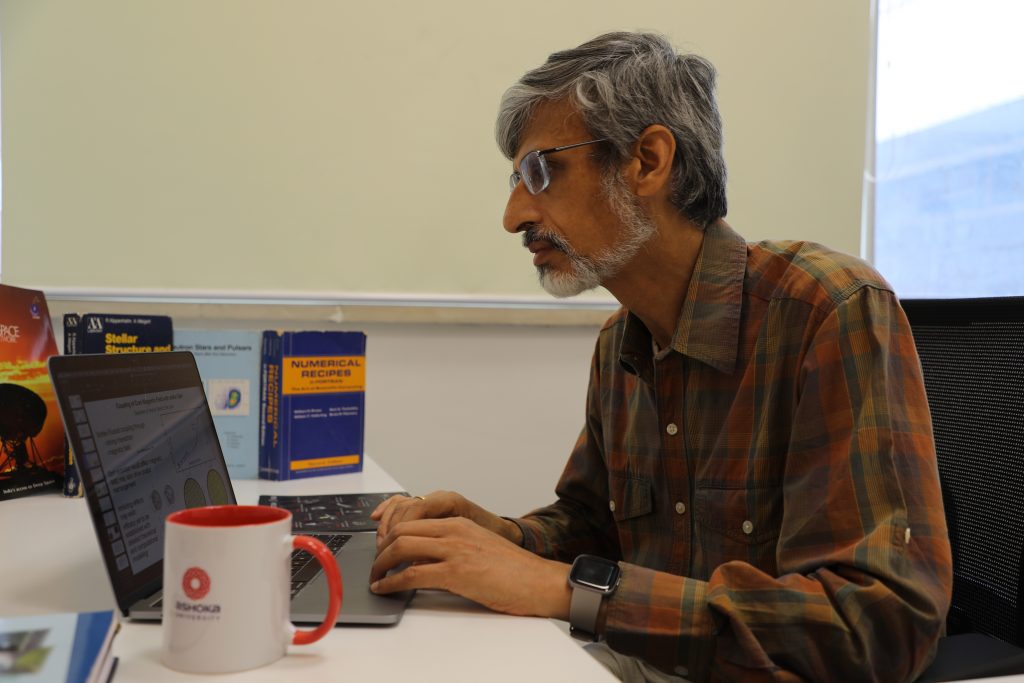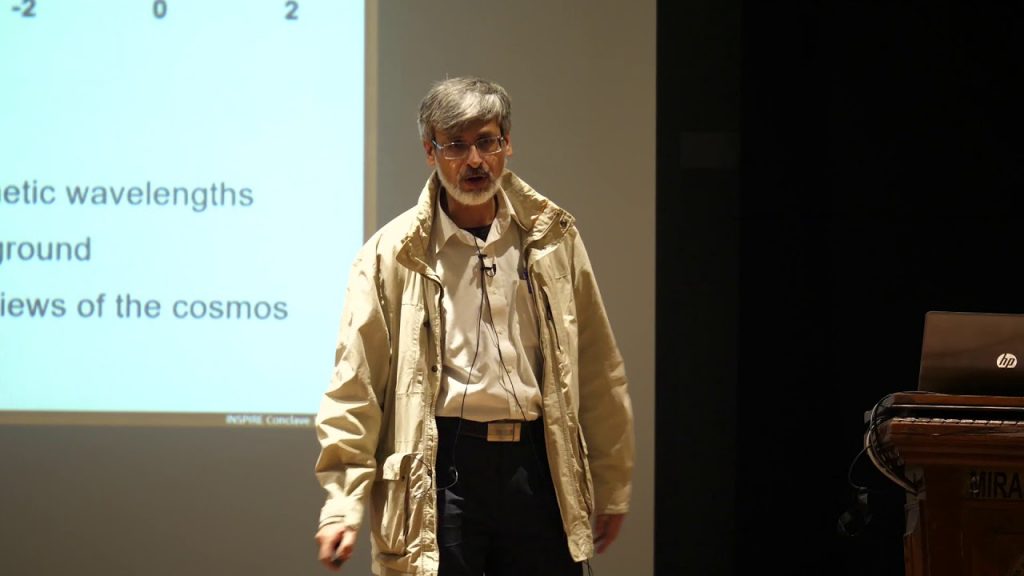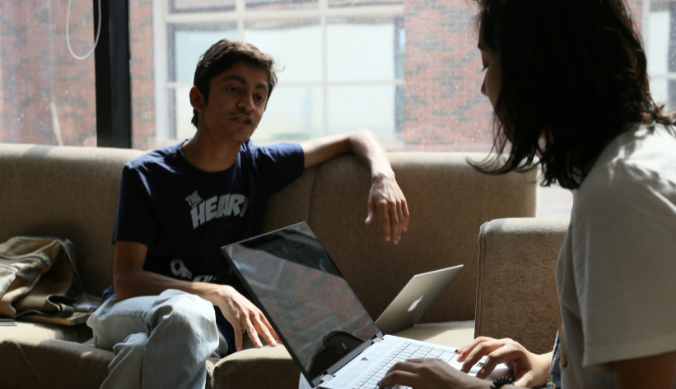Astronomy is in an exploding phase but technology is a limitation: Dipankar Bhattacharya
A recipient of the M.K. Vainu Bappu Gold medal by the Astronomical Society of India and the C.V. Raman award for Space Science by Government of Karnataka, Prof. Bhattacharya joined Ashoka University earlier this year
Something that anyone can do on a dark night is look up at the sky and see lots of star-like objects but there is a whole world out there that our naked eyes are unable to catch a glimpse of. Distinguished Astrophysicist Professor Dipankar Bhattacharya is a dreamer who has spent nearly four decades of his life observing the world beyond. He has seen stars exploding in distant galaxies or flying into violent collisions and with his vast experience of being involved at the highest levels of India’s astronomical projects, he is quite certain that astronomy is currently in an exploding phase.
He says: “With larger instruments, we discover things that are practically unimaginable for us; unless you see it, you would not believe that such an object could even exist.”
With advancements in science and technology, we have made some sense of the universe by now. We roughly know how large it is and what kind of objects populate it. “But if you ask that even with all the instruments at our disposal, what is the fraction of the objects that have actually been studied? I would say that is a tiny fraction, almost negligible. Now you may ask, I have studied a hundred thousand stars, what is the point of studying another hundred thousand stars? The nature is such that there are fascinating objects that are rarer and rarer in number. A rare object will only become visible to you when you go through more and more common objects,” explains Prof Bhattacharya, whose specific interests are Neutron Stars, Supernova Remnants and Gamma Ray Bursts.

He recalls that his own journey has been a result of many accidents. His father was in West Bengal State service, which meant that he ended up studying in several schools scattered in small towns and villages. By the time he was ready to join college, almost everybody around him suggested that he should pursue medicine as a professional course so that he could ‘settle well’ in life. But his own interest was in basic sciences.
“I appeared for the medical entrance examination, got selected and was almost ready to become a doctor. But I had also appeared for the National Science Talent Search Examination that used to be there during our time. I had done this almost secretly. If you did get it, it would support you through scholarships for Bachelor’s, Master’s and Ph.D. It would give you an opportunity to participate in intensive summer camps every year. But the only condition was that one had to pursue basic sciences, not a professional course. Fortunately, I got that and now I had the opportunity to use it as an argument to pursue what I really wanted to do. I got into Physics, my specialisation in Master’s was particle Physics at Jadavpur University,” he recalls.
In 1980, one of the summer camps that he went to was in Osmania University and there he got associated with the Centre for Advanced Study in Astronomy (CASA). It was here that he got a first-hand exposure to the world of astronomy.

“I also ended up grinding a mirror to make a six-inch telescope. It was a very interesting and revealing phase for me. But even then, I wasn’t sure to pursue astronomy as a career. In the last year of my Master’s in 1982, I went for another summer school to the Indian Institute of Science in Bangalore. That is where I got exposed to some really interesting stuff in astrophysics. I was able to apply vast information of Physics to understand what was going on in the cosmic world.
“Then I made a concrete decision that if I have an opportunity to do research in astrophysics, I will go ahead with it. It was at this very summer school that I heard of another programme, Joint Astronomy Programme, that was being started by Indian Institute of Science. The first applications were being received that year at that very time! I thought to myself that this seems very interesting, why not apply for it? And I did apply, got into the programme. If I was one year earlier or one year later, things would have been very different.”
He completed his Ph.D. under this programme, and was already deeply involved with the work that Raman Research Institute (RRI) was doing so he got a job almost immediately. He submitted his thesis in August 1987 and joined the Raman Research Institute (RRI) as a Junior Scientist in October that very year. He remained there for twenty years.
“I think this was the defining phase of my life, both from the point of view of the inspiration that I could imbibe from the highly stimulating environment over there and the opportunity to apply my wider skills to the research work we were doing over there. I have tried my best to impart whatever I have learnt to the later generations as they came along. We got involved into national projects. The Giant Metrewave Radio Telescope (GMRT), near Pune, was conceived during my time at RRI.
“In 1996, this idea emerged that India should launch a space-based astronomical observatory. I was brought in to this project right from the beginning where we discussed how it should be, planning, shaping and building it. That eventually materialised as the space observatory called AstroSat, launched in 2015. You can well imagine how long a project in astronomy may be, from the germination of an idea, to conceiving, planning and building it,” recalls Prof Bhattacharya, who continues to be the chair of the science working group of AstroSat.
He joined the Inter-University Centre for Astronomy and Astrophysics (IUCAA) in 2007 and stayed there for another 15 years before joining Ashoka University as the Sunanda & Santimay Basu Astrophysics Professor.
He says: “Astronomy is driven by technology. We have to take whatever is the best and latest technology available right now to improve our equipment so that we can see more objects. This is continuously leading us to finding rarer objects which were never heard of before. So, I can safely say that astronomy is in an exploding phase right now, the only limitation is technology.
“As more and more technological advancements are made, we will be able to obtain more information about fascinating objects out there. This is perhaps why we are seeing an upward trend in investments pouring into astronomy globally,” he maintained.
Prof. Bhattacharya says that the Science budget is a tiny fraction of any nation’s overall budget and because the instruments required in astronomy are very expensive to build, it is beyond the capacity of any nation alone. “That’s why there are lots and lots of collaborations among nations that is taking place to study the universe and find rare objects,” he added.
He shared that the idea is to start Ashoka University’s very own branded course in astronomy, which can be a minor to begin with. But it will have a unique flavour compared to the courses being imparted elsewhere. Prof. Bhattacharya is looking at blending theory, observation and computation along with a host of other aspects of astronomy for the students and researchers of Ashoka University.









